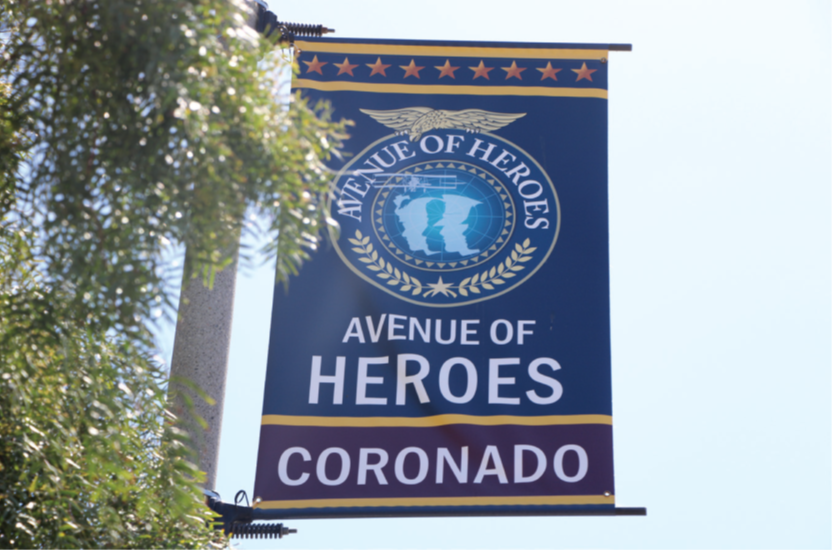Submitted by Ryan Crane
“It’s not exactly free parking, but it’s darn close.” These were the words of city staff referring to the unanimous city council decision to remove parking meters from Orange Avenue.[1] The city, in supporting this decision, laid out two main arguments. The first argument is that the parking meters were not functioning appropriately throughout the life of the contract. The second argument, and perhaps the more important, is that free or low cost parking is good for Coronado businesses and residents.
I would like to suggest that the under-pricing of city parking runs contrary to current research in parking policy conducted over the last decade, which has been most widely promulgated in UCLA Professor Donald Shoup’s book, The High Cost of Free Parking. The consensus view is that under-pricing curbside parking is damaging to cities in a number of ways.
The most obvious of these is the lost revenue that could be used to fund improvements in the area of the city covered by appropriately priced parking, either through the General Fund or through parking improvement districts. Coronado staff state that a demand-based price for parking could be as high as $3.00 per hour along Orange, but that Coronado parking policy has “never been about generating revenue.” But why is that the case? This lost revenue could be put to good use by the city government for street improvements or to subsidize the Summer Shuttle, for example. It’s not clear that this implicit subsidy to automobile use justifies the opportunity cost.
Viewing free parking as an implicit subsidy to automobiles reveals the next important consideration: it drives the overuse of cars and increases traffic congestion. Shoup has shown that, in some busy downtown areas, low cost parking leads people to leave their cars in the parking space longer than they would otherwise, leading to decreased parking turnover. This decreased turnover, and the associated decrease in the number of available spaces, leads to increased traffic as drivers “cruise” for parking. To combat this, the general recommendation is to price parking such that there is always a small number of unoccupied spaces. Critically, this ensures that businesses in these areas always have an available supply of parking. It may seem counterintuitive, but under-priced parking may actually hurt businesses by reducing the available parking supply. Subsidies drive overconsumption, and this leads to a shortage. This economic principle is no less true in the case of parking.
Low cost parking, and the implicit subsidy to automobiles, also drives congestion by encouraging substitution away from public transit. In fact, Mayor Bailey has previously observed this particular fact in conjunction with the Coronado Summer Shuttle. In a November 2015 article in the Coronado Times, Mayor Bailey discusses the following findings regarding use of the Summer Shuttle:
“[Bailey] pointed out that the shuttle service only got 30% of the people out of their cars, according to a ridership survey the city conducted over the summer. The rest would have found another alternative, including 46% who said they would walk. He also pointed out that almost as many people 29% said that they took to the bus because they “wouldn’t have to worry about parking.” With the exodus of summer visitors after Labor Day, finding a parking space is less troublesome.”[2]
If this is correct, prior studies conducted within Coronado suggest that it is the widespread availability of low cost parking in off-peak tourism periods that contributes to people substituting away from public transit (shuttle) or active transit (walking or biking), and towards automobiles. It seems to follow that decreasing the parking supply at all times, or increasing the cost of using public parking, will incentivize a similar number of people to avoid driving during the remainder of the year. The subsidy for cars therefore increases traffic through multiple mechanisms.
In light of the above, I would support the City Council if they were to explore some of the following options:
- Demand-based parking pricing along Orange Avenue
- Expand parking meter coverage to other areas that experience parking congestion, like Ocean and Silver Strand
- Increase the hours during which parking meters operate.
I hope other residents would join me in doing so. Coronado would be in good company, as an increasing number of cities are employing similar policies.
– Ryan Crane
[1] “Coronado to ditch parking meters.” San Diego Union-Tribune. July 23, 2020
https://www.sandiegouniontribune.com/communities/south-county/coronado/story/2020-07-23/coronado-plans-to-ditch-parking-meters
[2] “City Council Discusses Summer Shuttle and Wayfinding Signage”. Coronado Times, November 5, 2015
https://coronadotimes.com/news/2015/11/05/signs-buses-top-council-actions/




